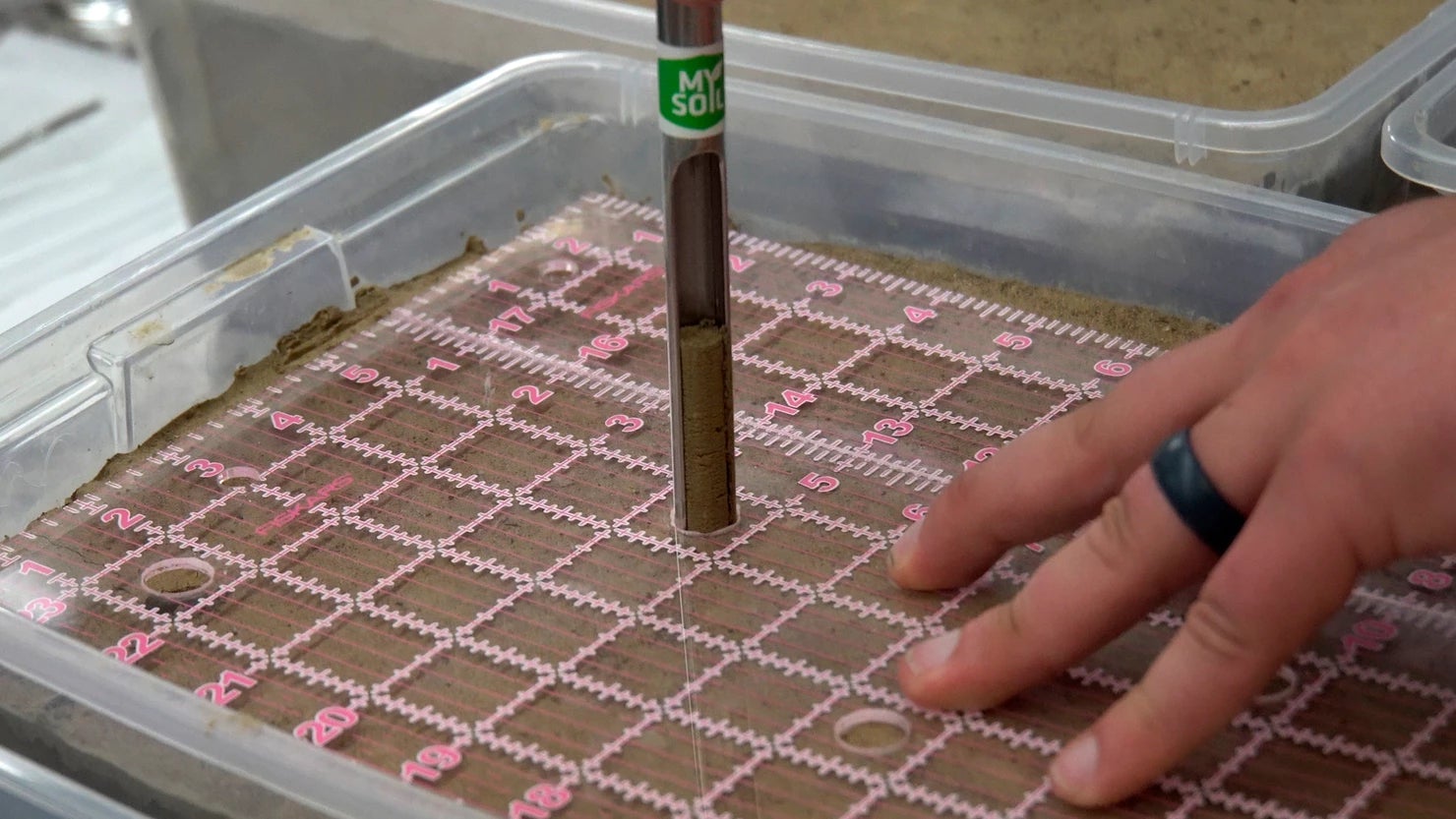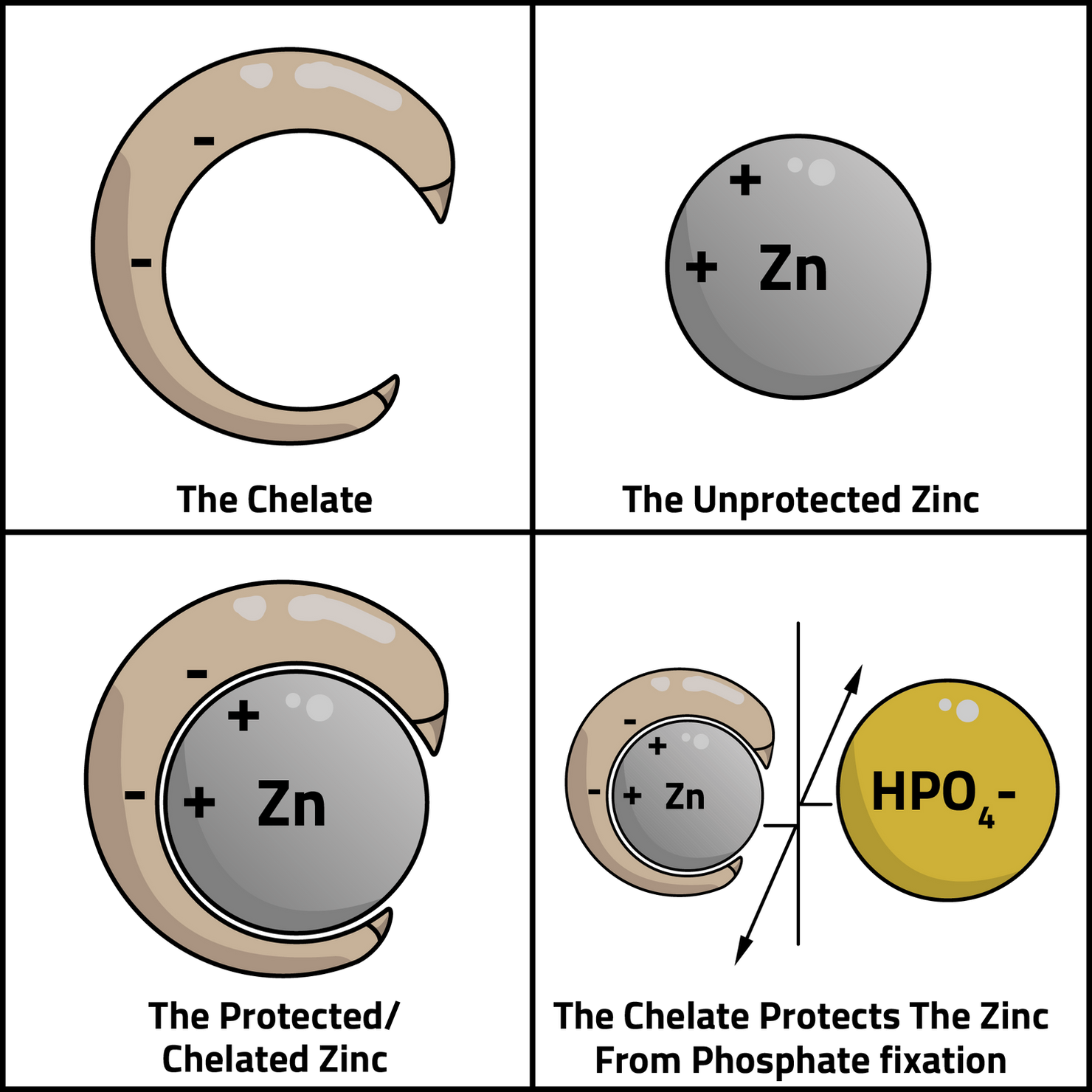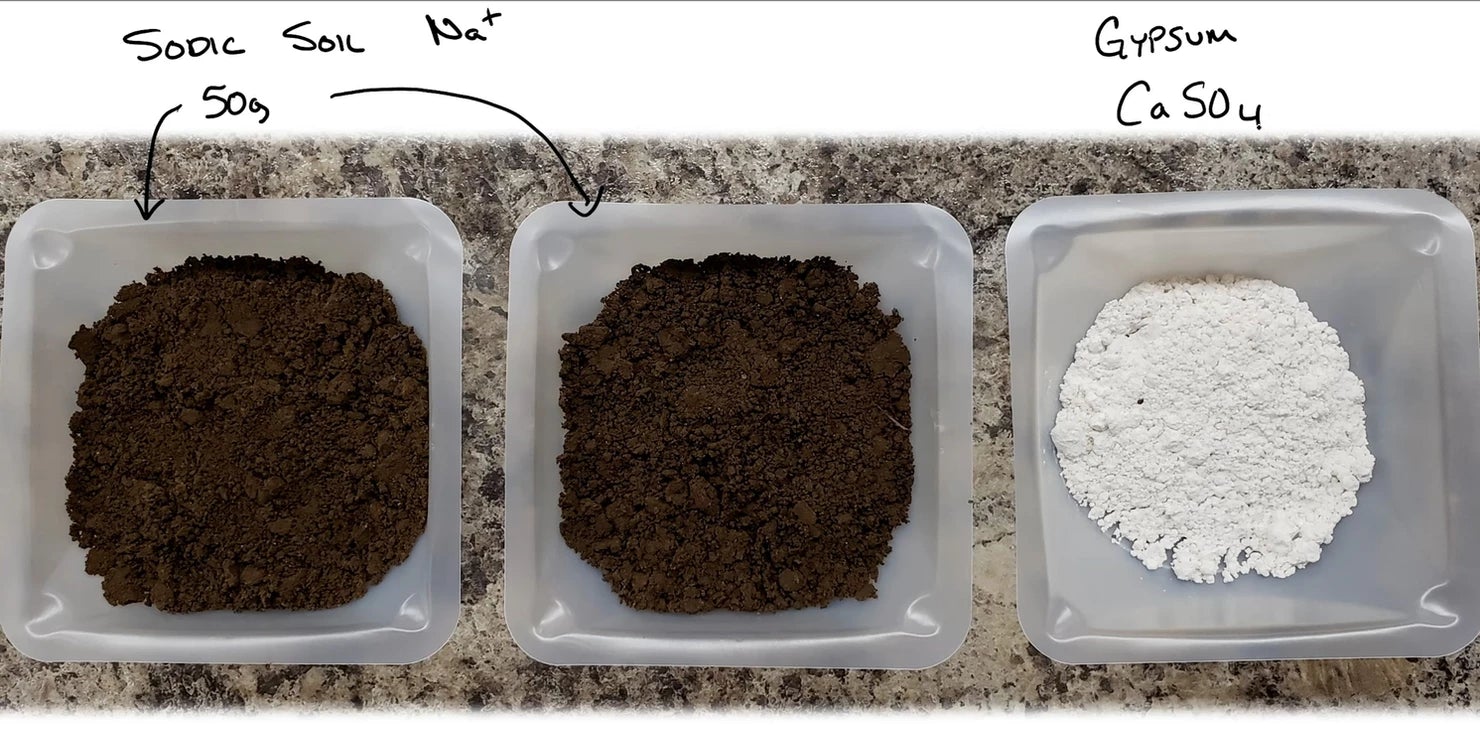MySoil - Jun 7, 2021
Chelated Zinc Fertilizers
So, you got your soil test results back and it recommended and application of a micronutrient such as copper, iron, manganese or zinc. Now it’s time to pick a product. You’ll likely notice that there are many options and many different price points for the same amount of fertilizer. Why is this? There are several factors at play here, but after inspecting the labels of these fertilizers a bit closer you’ll likely recognize that some may contain, for example, Zinc Sulfate, while others may contain Zinc EDTA, Zinc DTPA, Zinc EDTA & IDS, or Zinc EDDHA and so on. The last four listed indicate that the zinc is coupled with a chelating agent, or in other words, that the zinc is chelated. The word ‘chelate’ is derived from the Greek word for claw or lobster claw. What is the difference between a nutrient that is chelated and one that isn’t? In the case of Zinc and many other micronutrients, once applied to soil in their elemental form they are susceptible to being fixed, or made unavailable, by different chemical and biological processes. A great example is that when Zinc is applied to soils with pH greater that 6.5, especially those higher than 7.0, it is susceptible to being fixed by phosphate, making it unavailable. When Zinc Sulfate is added to the soil, the following reactions are likely to occur, making some of the applied zinc unavailable for plant uptake.
ZnSO4 à SO4--+ Zn++ then Zn+++ HPO4-- à ZnHPO4 (unavailable)
The chelated form of Zinc is not susceptible to this fixation as the chelating compound such as EDTA (Ethylenediamine Tetraacetic Acid) bonds itself to Zinc in a claw-like fashion to prevent the phosphate from binding with the Zinc and therefore enhancing the bioavailability of the Zinc. Below is a depiction of how this works.

Of course, nature had this figured out far before us and there are a number of natural chelating agents in the soil, and exuded from roots, such as fulvic acid, humic acid, and mugineic acid to name a few. Grasses tend to be more effective at producing these.Matt at SoiLab decided to do a replicated study to demonstrate the efficacy of a couple different chelated products compared to zinc sulfate. Check out the video of this study at (YouTube Link Here). We hope that the data he collected helps drive decisions in your lawn and garden!To start the study he collected a medium textured soil with a pH of 7.4 and sub-optimal zinc levels. Equal amounts of soil were then placed in seven separate and identical trays. Three products were then chosen, Zinc sulfate, Zinc chelated with EDTA, and Zinc chelated with EDTA & IDS. Two rates were chosen, 0.125 lbs Zn/1,000 ft2 and 0.25 lbs Zn/1,000 ft2. Calculations were then performed to determine the amount of each product needed for each tray.

The product was then put into solution and applied uniformly to its soil tray. A really cool Rainin precision pipette was used for the application. One tray received the same amount of solution but without any Zinc additions. After application, all trays and treatments were watered in equally. The same amount of water was applied to each tray over the course of the next week to keep the soil field moist.

One week after the zinc applications a soil probe was used to collect enough soil from each tray to run three soil tests (three replications). The MySoil ion exchange resin soil tests were used to determine the bioavailability of the zinc for each treatment and the untreated control.


These are Matt’s takeaways from the study:
- Each of the products at both the low and high rates worked to increase Zinc levels in the soil from a sub-optimal level to an optimal or above-optimal level when compared to the untreated soil. Note: Due to zincs low soil mobility surplus levels of zinc should not be of concern as it should remain in the rootzone through several growing seasons.
- The two chelated products significantly increased available soil Zinc levels more than the Zinc Sulfate (Non-chelated Zn) at both rates.
- The Zinc EDTA & IDS chelation product did provide the greatest increase in soil available Zinc, although in this study it appears to not be statistically significant over the Zinc EDTA.
- Resins accurately quantified the availability of the different Zinc chemistries in the soil when applied at equivalent rates and proved out the science behind chelating agents and how they can work for you.
- At a pH of 7.4 in this particular soil it can be assumed that much of the applied Zinc becomes bound with Phosphorus forming Zinc Phosphate if it is not protected by a chelating agent. This was seen with the Zinc Sulfate formulation where a large amount of the applied Zinc was made unavailable when applied to this particular soil.
So how can you use this information to help drive decisions in your lawn and garden? Hopefully you now have a better understanding that some products on the market, such as chelated micronutrients, may have a higher price tag than others, but they may have greater bioavailability in certain soils as well. When selecting or comparing products you can take a look at the analysis portion of the label to determine if the price is perhaps associated with some of these chelating agents. You are now armed with the knowledge to understand this and decide if that price makes sense in your soil.

Remember in all soil scenarios chelating agents may not be necessary to get the best bang for the buck, an example would be in highly acidic, or low pH soils. Also recall that simple Zinc Sulfate also increased soil available Zinc, just significantly less so than the chelated Zinc products. Another point to make is that chemical reactions between micronutrient chelates and soil can be avoided by using a foliar application. Chelated nutrients also facilitate nutrient uptake efficiency for foliar application because crop leaves are naturally coated with wax that repels water and charged substances. The organic ligand around the chelated micronutrient can penetrate the wax layer, thus increasing nutrient uptake. Compared to traditional micronutrient fertilization, chelated fertilization is significantly more effective and efficient than non-chelated fertilizer sources. It’s our opinion that a good blend of feeding the soil mixed with liquid or foliar applications guided by soil test results should produce the highest quality plants!
For some additional reading on chelating agents and Zinc you can check out the following publications from the University of Florida and the International Plant Nutrition Institute.
Publications:
Understanding and Applying Chelated Fertilizers - UF ExtensionZinc Nutri - Facts



